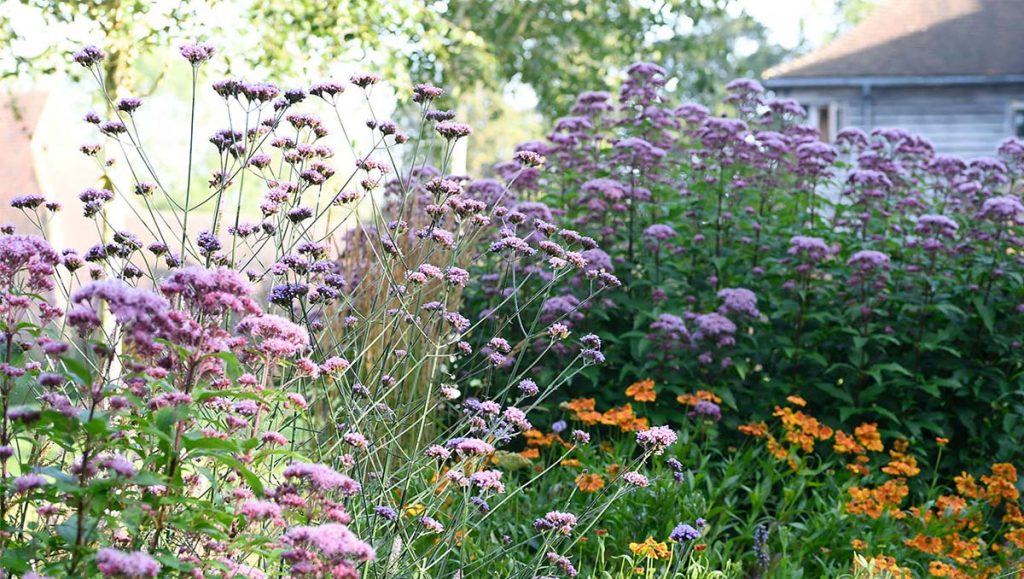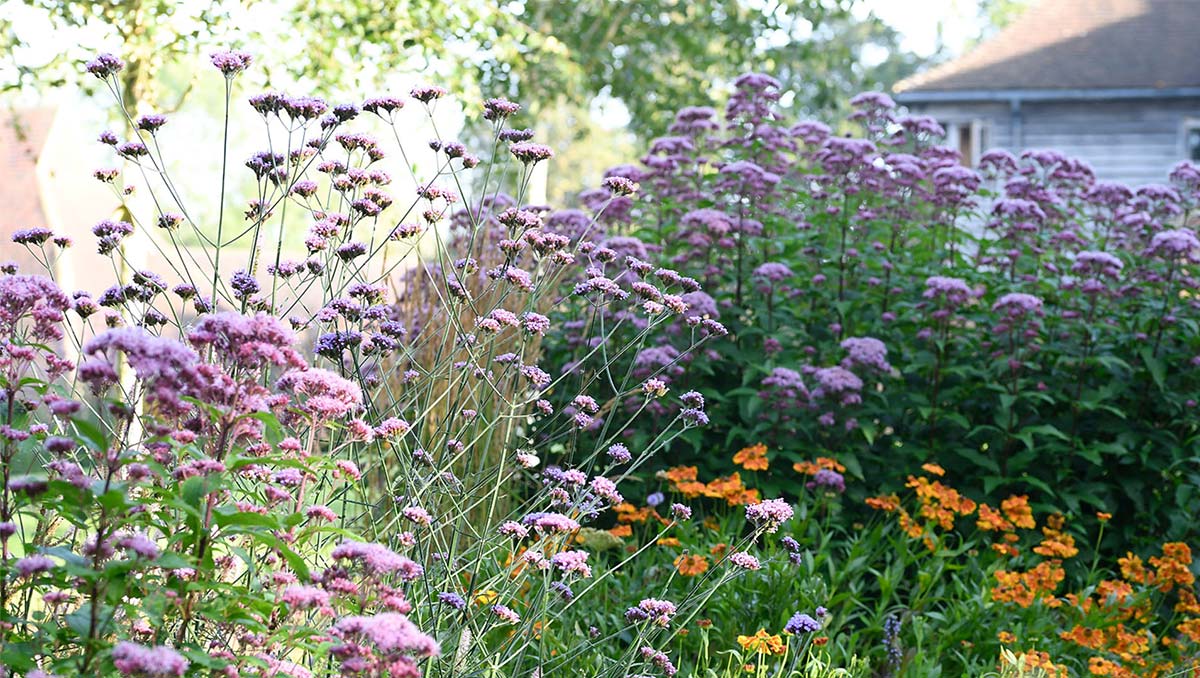
The British Textile Biennial took place last month, running a host of fascinating exhibitions and talks around textile design and history.
In our studio we have a principle of really tuning into the landscape surrounding a garden. Our aspiration is to preserve and build on a garden’s unique sense of place in all our designs. And in this regard, it can be useful to first look to the past – for understanding, as much as for inspiration.
In her biennial-inspired podcast ‘Cloth Cultures’ curator and broadcaster, Amber Butchart, talks about a beautifully embroidered herb pillow, thought to date from the 16th century. It is adorned with an intricate tapestry of insects and flowers – from pea pods to butterflies and snails. To have studied and captured the beauty of these living wonders in needle and thread speaks of a real awe and appreciation of wildlife.
For time immemorial the natural world has inspired art, literature, fashion, design. Fast-forward to modern day and our finely balanced eco-system is in jeopardy.
We are all familiar with the rally cry to improve biodiversity and protect precious wildlife. The idea that we are ‘custodians’ of our outdoor spaces is uppermost in people’s minds.
Increasing the volume and variety of pollinating plants in our gardens, balconies and window boxes is a simple, achievable step in helping to combat this challenge.
Through our design process, we invite clients to create places which ‘shouldn’t look as if we’ve been there’. A gentle intervention inspired directly by what lies around us. We look to the natural forms of locally-occurring plants, with flowers that can be easily accessed by insects – avoiding double flower cultivars, for example, which are not an accessible to visiting pollinators.
Wildflower meadows large and small have meant an increase in pollinators and wildlife generally in the gardens we make. Choosing the right plant for the right place is important for the sustainability of the space, ensuring that it isn’t too hard to maintain and reducing the need for irrigation. Grass lawns have become clover lawns for the pollinators; shrub borders are filled with plants that butterflies love.
Using a combination of plants which offer a range of flower shape – umbellifer, spire, daisy – will help cater for a mixture of different insect types.
A few of our studio plant staples for pollinators include: Agastache foeniculum, Buddleja davidii, Digitalis x mertonensis, Eupatorium maculatum, Foeniculum vulgare, Geranium Rozanne.

